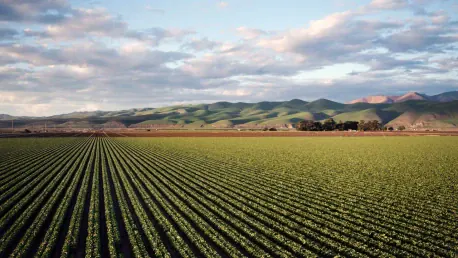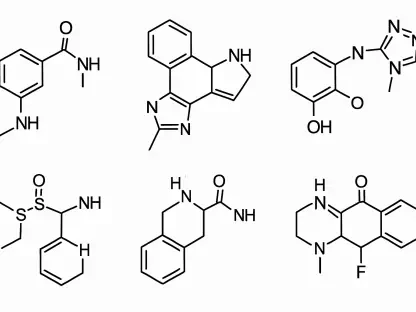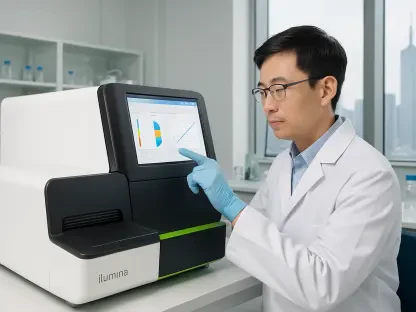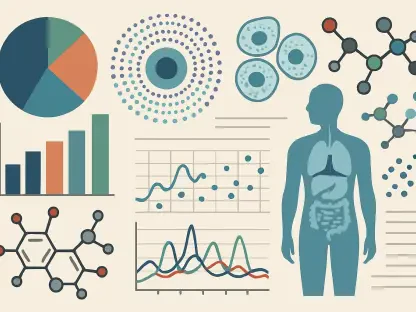Australia is renowned for its stringent biosecurity protocols, which are essential for protecting the country’s unique environment and rural industries. These measures are crucial for maintaining the safety and integrity of food production and agriculture. The fines imposed for seemingly minor domestic violations, such as bringing fruit into South Australia without proper clearance, underscore the importance of these regulations. While these biosecurity measures may seem overly strict, they play a vital role in safeguarding the ecological balance and supporting the agricultural sector’s viability. However, as technology rapidly evolves and becomes more integrated into agricultural practices, another critical issue has emerged: cybersecurity. There is an increasing need to address cybersecurity threats that are becoming increasingly prevalent in these sectors, posing risks that are less visible yet potentially as damaging as biosecurity breaches.
The Growing Importance of Cybersecurity in Agriculture
With advancements in agri-food technology in Australia, which garners approximately $800 million in annual investments, innovations like smart devices, artificial intelligence (AI), and Internet of Things (IoT) capabilities are rapidly becoming indispensable components of agricultural supply chains. High-resolution weather monitors powered by AI currently offer farmers essential data to counter increasingly severe and unpredictable weather patterns. Furthermore, systems like remote temperature control of storage units and irrigation network management are becoming standard, while the introduction of self-driving tractors is expected by 2026. These technological advancements are transforming the agricultural landscape by significantly improving operational efficiencies and streamlining supply chains. Yet, as these technologies become more embedded in everyday agricultural operations, the potential for cyber threats also increases.
Despite the clear benefits of these technological advancements, there is a notable gap in investment and understanding of cybersecurity within these sectors. As technology continues to integrate into agricultural processes, it creates new vulnerable points that can be exploited by cybercriminals. A cyberattack could disrupt these systems, causing not only operational inefficiencies but also potentially severe consequences such as product contamination. These breaches can occur either through malicious attacks or unintended outages, and without efficient systems to detect and report such incidents, the impact can be exacerbated. The need for robust cybersecurity measures becomes evident as the sector strives to balance technological innovation with the security required to protect sensitive and business-critical data stored across supply chain networks.
Real-World Implications of Cybersecurity Breaches
Several notable cyberattacks serve as stark reminders of the real-world implications of cybersecurity breaches in the agriculture and food sectors. For instance, in 2023, a cyberattack targeted the US food giant Dole, leading to significant operational disruptions, suspending production in North America, and halting food shipments. Although the attack was resolved relatively quickly, it resulted in several days of delays, highlighting the immediate impact that such incidents can have on operations. Another significant example is the 2021 ransomware attack on JBS, the world’s largest meat supplier. This attack forced the temporary closure of factories in the US, Canada, and Australia, and necessitated a $16.5 million ransom payment to resume operations. The repercussions of these cyberattacks underscore the vulnerability of critical infrastructure to digital threats and the importance of protecting business-critical data.
These incidents illustrate that the intricate web of supply chains is not immune to cybersecurity breaches. They highlight how cyberattacks can disrupt not just a single entity but can ripple through entire industries. The 2020 ransomware attack on Talman Software, which supports 75 percent of the wool industry in Australia and New Zealand, is another relevant example. This attack stymied wool sales, withholding $70 million in products from the market and subsequently causing market turmoil as prices dropped due to a sudden supply influx once operations resumed. Unlike perishable goods, the delay of wool sales showed how cyberattacks could destabilize markets and disrupt business continuity in non-obvious ways. As these examples show, the consequences of cyber threats can be extensive, affecting supply chains globally and impacting consumer health and safety.
The Need for Proactive Cybersecurity Measures
The vertically integrated nature of food and distribution supply chains means that a cyber-physical threat or operational outage in one part of the system can cause a domino effect, jeopardizing both national and global food supplies and consumer health. With IT, IoT, and operational technology (OT) systems becoming deeply embedded in these sectors, ensuring their seamless operation is critical for maintaining business continuity. It’s not just an operational necessity but a significant factor in securing the integrity and reliability of the entire supply chain. This makes it imperative for stakeholders to recognize the interconnectedness of these systems and the far-reaching consequences of any disruption. This interconnectedness amplifies the urgency for effective cybersecurity measures to protect critical infrastructures from cyber threats.
To safeguard these industries, legislative requirements such as the Security of Critical Infrastructure Act are crucial. This legislation mandates that industries adopt robust cybersecurity measures and adhere to stringent guidelines to safeguard critical infrastructures from potential cyber threats. It is essential for businesses to anticipate cyber threats proactively, incorporating cybersecurity best practices and robust protocols to mitigate risks. These measures should include regular system updates, comprehensive monitoring, and swift incident response plans to ensure that digital infrastructures are as well-protected as physical ones. By adopting a proactive approach to cybersecurity, the agriculture and food sectors can safeguard themselves against evolving threats and maintain the integrity of their operations.
Balancing Innovation and Security
The National Farmers’ Federation has set an ambitious target to achieve a $100 billion farm-gate output by 2030, necessitating an increase in the current annual growth rate from 3 percent to 5.4 percent. This goal underscores the critical need for continuous innovation and the adoption of advanced technologies to drive efficiency and productivity in the agriculture sector. However, achieving this target is not without its challenges, particularly concerning cybersecurity. As the reliance on technology grows, so does the exposure to cyber threats, making it essential to balance innovation with robust security measures. Technological advancements, while crucial for maintaining Australia’s leadership in agriculture, food, and distribution, create vulnerable points of entry for cyber threats.
It is vital to give due attention to cybersecurity to ensure that the benefits of technological innovation are not undermined by digital vulnerabilities. This involves integrating cybersecurity considerations into the design and implementation of new technologies, ensuring that security is not an afterthought but a fundamental aspect of technological advancement. By fostering a culture of cybersecurity awareness and investing in state-of-the-art security solutions, the sector can protect itself from potential threats while harnessing the power of innovation. The core message is clear: just as biosecurity protocols are essential for safeguarding against physical threats, cybersecurity protocols are indispensable for protecting digital infrastructures. By adopting a proactive and balanced approach to innovation and security, Australia’s agriculture and food sectors can continue to thrive in a rapidly evolving technological landscape.
Conclusion
Several notable cyberattacks highlight the real-world implications of cybersecurity breaches in the agriculture and food sectors. In 2023, cybercriminals targeted US food giant Dole, significantly disrupting operations by suspending production in North America and halting food shipments. Though the issue was resolved quickly, it resulted in several days of delays, demonstrating the immediate impact such incidents can have. In 2021, a ransomware attack on JBS, the world’s largest meat supplier, forced the temporary closure of its factories in the US, Canada, and Australia. This attack led to a $16.5 million ransom payment to resume operations, underscoring the vulnerability of critical infrastructure to digital threats and the importance of protecting essential data.
These incidents illustrate that supply chains are not immune to cyberattacks, which can disrupt entire industries. The 2020 ransomware attack on Talman Software, supporting 75 percent of the wool industry in Australia and New Zealand, is another example. This attack halted $70 million in wool sales and caused market turmoil as prices dropped due to a sudden supply surge once operations resumed. These examples show how cyber threats can have extensive consequences, affecting global supply chains and potentially impacting consumer health and safety.









